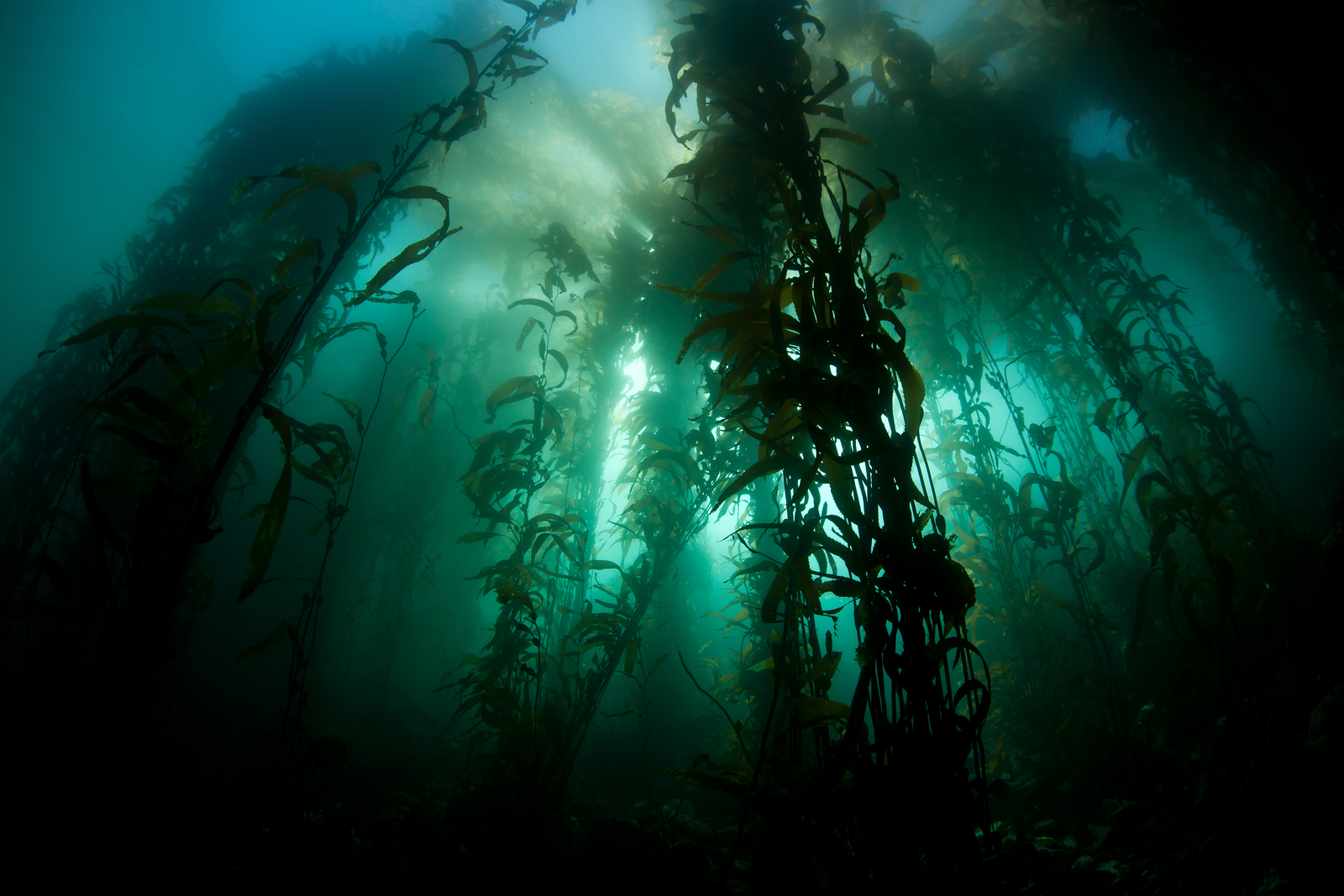The algae opportunity

The field of algae is growing rapidly. Through heterotrophic algae, we are finding a more natural, pure sustainable source of DHA and high quality fatty acids, that not only provide needed nutrients, but are revolutionising the way we feed our livestock.
By Alex Tsappis, Applications Nutrition Specialist at Alltech
The biodiversity of algae is tremendous: there are an estimated 800,000 species of algae ranging from single-celled to multi-celled organisms such as the 200-foot long giant kelp. Algae produce carbohydrates, oils, protein, vitamins, pigments and organic material. Algae’s genetic potential is also large, with a genome that is more than twice the size of yeast. Such characteristics enable algae serving many industries such as food, animal feed, cosmetics, pharmaceuticals, and biofuels.
Since algae are aquatic, they grow much faster than land plants as they do not have to expend energy growing roots and support structures like trunks, leaves and stems. Without the need for support, algae can triple or quadruple their biomass every day. While land plants only grow in one direction, algae can grow in all directions. This rapid growth means that one acre of algae can produce the same amount of protein in a year as 21 acres of soybeans or 49 acres of corn making algal alternatives; a more sustainable option in the future.
While macroalgae (seaweed) dominates the global aquatic plant production, the microalgae industry is growing rapidly as scientists continue to find new applications for both freshwater and marine species. Today, the freshwater Chlorella and Arthrospira are primarily used for animal feed as well as for human dietary supplements and ingredients. Other species are used for the extraction of high-valued components such as vitamins, omega-3 fatty acids, natural pigments and antioxidants.
The most commercial production of microalgae is done autotrophically in open outdoor circulating raceways or ponds. Under autotrophic growing conditions, microalgae use light energy to fix carbon dioxide, their carbon source, into hydrocarbons with oxygen discharged as a waste product. However open systems are subject to several disadvantages such as airborne contamination, variability, chemical and physical contamination; downstream processing and the growth of zooplankton and other species are also drawbacks of an open system.
The other commercial production method in growing algae is the heterotrophic system. Heterotrophic species get their energy from organic carbon compounds in much the same way as yeast, bacteria and animals. By eliminating light from the production process, any fermenter (such as those used for production of medicines, beverages and food additives) can be used for heterotrophic algal growth. These fermenters can generate large volumes of highly productive cultures making them less expensive than the autotrophic system.
The heterotrophic method maintains a closed, controlled system that provides a more consistent, traceable and pure algal product. For example, by manipulating the physical and chemical properties of the cultural medium, several species of microalgae can overproduce and accumulate higher levels of specific fatty acids.
Xu and others demonstrated that C. protothecoides had a lipid content as high as 55%, approximately four times greater than algae grown autotrophically.
In another study, Barclay and others showed that omega-3 fatty acid productivity was two to three times higher when produced in heterotrophic rather than autotrophic conditions.
Microalgae contain large quantities of high quality eicosapentaenoic acid (EPA) and docosahexaenoic acid (DHA). The lipid content of microalgae can reach up to 70%, with high concentrations of omega-3 and omega-6 fatty acids. Specific strains have been found to contain a staggering 14% DHA.
Microalgae and aquaculture
Algal oils are now being commercialised as sustainable alternative sources to fish oils. They have been shown to be nutritionally equivalent and can successfully enrich larval feed and to replace fish oil in fish diets.
Fish oil, derived from fisheries, is the most common and major source of the omega-3 fatty acids EPA and DHA. However, due to limited availability, sustainability issues, contamination risks, inconsistency and the increasing price of fish oil, some fish farmers are opting to use cheaper alternatives high in omega-6, for example vegetable oil, cotton seed oil, sunflower oil. These alternatives are however poor in omega-3 EPA and DHA.
About 30% of the world’s algae produced is used for animal feed production, with its largest applications in aquaculture. Microalgae are required in larval nutrition, either fed directly in the case of mollusks and panaeid shrimp, or indirectly as live prey in small fish larvae.
Algae and Alltech
Alltech has been working with algae for the past five years. During this time Alltech screened many different types of algae and investigated the vast array of potential uses. Alltech scientists conducted two trials to determine heterotrophically grown microalgae’s affect in Nile tilapia and Rainbow trout.
The great potential for microalgae resulted in Alltech purchasing the 100,000 ft2 algae facility in Winchester, Kentucky in 2010. Alltech Algae uses proprietary algal technology to process heterotrophic algae because of its nutritional benefits.
Alltech’s Aquaculture Center examined the impact of algae into the diets of Nile tilapia. The microalgae Schizochytrium limacinum can be fermented to produce a finished product that contains 50% fat and 14% DHA. This product increased the DHA content in the tilapia fillet while improving weight gain, while no negative growth was observed.
Another study was carried out to evaluate if algae could improve the growth performance and DHA levels in Rainbow trout. Algae was added to 90 Rainbow trout diets from Trout Lodge Sumner, WA, as an energy source replacing fish oil and soybean oil. It resulted in an increased weight gain, indicating that this alga is a suitable replacement of fish oil and fishmeal. The addition of the 14% DHA algae also led to a higher DHA content in Rainbow trout fillets. By providing a clean and consistent source of DHA omega-3 fatty acids and high quality protein, heterotrophic microalgae offers more nutrition to a diet than the autotrophic method.
Problems with the western diet
The fish market isn’t the only industry where omegas-3s (specifically DHA) are quickly disappearing. A nutritional disaster is literally knocking on our front door. Humans require an omega-6: omega-3 ratio of 4:1. The typical western diet provides a staggeringly high 16:1 ratio. Lowering this ratio reduces the risk of many chronic diseases including Alzheimer’s, cardiovascular disease, coronary heart disease and some cancers. In addition to the benefits gained from a healthy omega-6: omega-3 ratio, increased levels of DHA provide much needed nutrients essential to human functions.
Omega-3 enriched foods and beverages have had an enormous growth over the last six years. But, not all omega-3 are created equal. DHA, a long chain omega-3 fatty acid, is the most abundant omega-3 in the brain and retina. It is also an important structural component of heart tissue and naturally found in fish and marine algae. EPA, a long chain omega-3 fatty acid, is important for human health. However, it is not stored in significant levels and is not efficiently converted to DHA in the human body. The shorter-chain omega-3 fatty acid, ALA, serves mostly as a source of energy in the human body and cannot be converted efficiently into DHA.
DHA play important roles in human diets during pregnancy and early infant development. In adults, high levels of dietary DHA and EPA have been associated with lower rates of coronary heart disease, arrhythmias, atherosclerosis and inflammation, diabetes, and cancers. The typical US dietary intake of DHA + EPA is 100 mg/day, falling far short of the recommendations that range from 400 to 1000 mg/day.
Food products are now being enriched or fortified with DHA omega-3 in order to meet consumers’ nutritional requirements. Some bread and milk are now being fortified with DHA omega-3. Alltech has set out, together with retailers, feed manufactures and farmers, to create eggs and meat that are high in omega-3 DHA.
Microalgae and functional foods
Alltech tested the effects of oil from Schizochytrium, the microalgae strain added to layer diets on egg fatty acid profiles. Alltech tested Hy-Line W36, 46-week-old, 288, 12 replicate units of six hens per unit, egg samples taken after feeding four weeks treatment diets, the control diet was a corn-soy and the dose titration: 0, 0.5, 1.0 and 2.0% algae were compared.
Microalgae supplementation of chicken diet is potentially safe, sustainable way to create functional, DHA-enriched eggs to help human dietary deficiencies.
In order to utilise microalgae on a wider level, greater understanding of their nutritional value is required. Alltech investigated the effects of adding different levels of microalgae to broiler diets on growth performance, immunity of broiler chicks and the fatty acid profile of chicken meat and liver.
Around 180, one day old male broiler chicks were tested, ten replicate cages of six chicks per cage. The trial was conducted over 21 days with treatments at 0, 2, and 4% of algae supplementation. The results concluded that dietary supplementation of algae can enrich omega-3 fatty acids in meat and promote growth performance and immunity of broilers.
The future of algae
Algae are a diverse group of single organisms, with over 800,000 different species thought to exist with an estimated ability to produce over 15,000 novel compounds.
While macroalgae dominates the global aquatic plant production, microalgae algae are currently being utilised in various nutritional products used in feed and foods due to the rich DHA omega-3 attributes.
What is the algae opportunity? Are algae the future? Absolutely. A microalgae-based feed supplement can be used to create a safe and sustainable alternative to fish oil. The question is no longer ‘if’. The question is ‘when’, and the answer is ‘now’.
See attached pdf for figures
References are available on request.
Author:
Alex Tsappis, Applications Nutrition Specialist at Alltech











